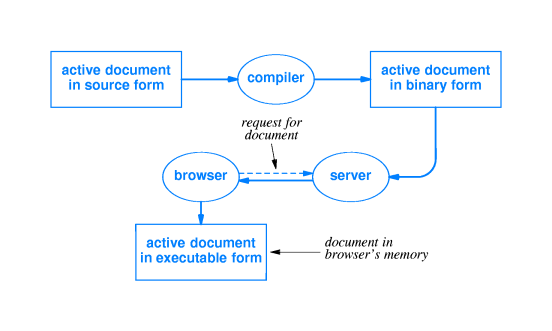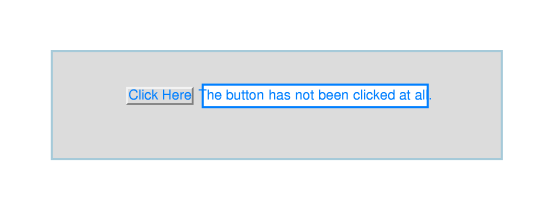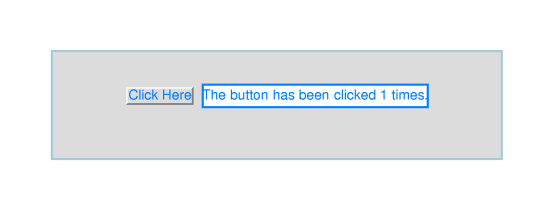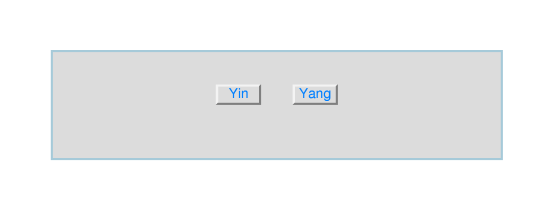- Motivation for Active Documents
- Earlier Server-Based Technology
- Translation Steps To Prepare and Load
- Java Technology, Language & Applets
- With dynamic document technology, the user must make a request to
get a screen update. That happens automatically with an active
document.
- Early Techniques:
- Server Push: Server sends new content periodically (without being asked)
- Client Pull: Browser periodically requests and displays the (next version of) the document (without the user having to ask.)
- The early techniques overworked the server. Updates were slow.
- It made sense to take an approach under which
the browsers run the program that produces updates for the
screen.
- It distributes the work among many processors.
- Many changes require no use of network bandwidth.
- Typically a programmer prepares an active
document program in source form using a programming
language, such as Java.
- The source is compiled into a binary
form and saved on the server's machine.
-
 A browser makes a request and downloads
a copy of the binary file.
A browser makes a request and downloads
a copy of the binary file.
- The browser then performs operations comparable to linking in order to make the program
executable on the host machine.
- Finally the browser loads and executes the program.
- Click here to
see a Java TicTacToe Game
- There is some Java code based on the text examples here.
- Sun Microsystem's technology for producing and executing
active documents.
- A Java applet is an active document program.
- Java Technology Includes:
- The Java Programming Language
- The Java Runtime Environment (support for execution)
- The Java Class Library (built-in functions for common programming chores)
- 37.6.1 Language Characteristics
- High Level (not like assembly lang)
- General Purpose
- Similar to C++
- Object Oriented
- Dynamic (created at run-time - objects and some bindings )
- Strongly Typed (must declare the data type of each data object & use only the allowed operations on each object.)
- Statically Type Checked (all type compatibility checking is performed at compile-time)
- Concurrent (the programs can have multiple threads of execution - "multitasking")
- 37.6.2 Similarities to C++
Characterized by:
- Interpretive Execution - Java bytecode is a machine-independent binary representation that must be interpreted.
- Automatic Garbage Collection - reclamation of memory the program cannot reference
- Multi-Threaded Execution - support for concurrent thread execution
- Internet Access - system includes a socket library
- Graphics Support - a Java program can create windows
containing text and/or graphics.
- 37.7.1 Machine Independence and Portability
- One may port Java bytecode to any system that supports Java.
- A library of class definitions
- There are classes for:
- Graphics Manipulation (display control)
- Low-Level Network I/O (e.g. use TCP or UDP)
- Interaction With A Web Server (e.g. fetch an item from a URL)
- Runtime System Access (e.g. thread creation)
- File I/O (e.g. for long-term state)
- Conventional Data Structures
- Event Capture (e.g. mouse clicks)
- Exception Handling
- A range of high- and low-level facilities are available for manipulation of the display and interaction with the user.
- Java applets do not contain code to manipulate specific hardware.
- To make Java portable, a Java runtime environment uses a concept known as a factory. Before execution of an applet the runtime environment establishes a mapping between each native Java graphics operation and a corresponding intermediate function that is able to use the computer's window system to implement the operation.
- A browser that supports Java must have a Java interpreter that
fetches, decodes and executes Java bytecodes.
- The interpreter must support the Java runtime environment.
- The programmer creates a source file (*.java file)
- Someone compiles the program using the Java compiler called
javac
- The output of the compiler is a program represented as Java bytecode. (*.class file)
-
Click here to run the applet clickcount.
- Characteristics of clickcount:
- Unlike a CGI program, it maintains state information locally.
- Unlike a CGI program, it does not contact the server before updating the screen.
- The code for the clickcount applet:
/* Import all matching classes: the standard Applet and Abstract Window Toolkit classes. */ import java.applet.*; import java.awt.*; /* Declare class "clickcount" as a subclass of class "Applet" */ public class clickcount extends Applet { /* start class clickcount */ int count ; TextField f; /*
This code builds the display
of the applet (Figure 37.3 at right)
It redefines "init"
*/
public void init ()
{ /* start class init */
count = 0;
/*
This code builds the display
of the applet (Figure 37.3 at right)
It redefines "init"
*/
public void init ()
{ /* start class init */
count = 0; /*
Create an instance of "Button"
and add it to the applet's
window.
*/
add(new Button ("Click Here") );
f = new TextField
(" The button has not been clicked at all.");
f.setEditable(false);
add(f); /* Associate f with the applet window. */
} /* end class init */
/*
This code redefines "action."
It determines the action performed
when the user clicks on the button.
*/
public boolean action (Event e, Object arg)
{ /* start class action */
if ( ( (Button) e.target).getLabel() == "Click Here")
{ /* start if */
count += 1;
f.setText
(" The button has been clicked " + count + " times.");
} /* end if */
return true;
} /* end class action */
} /* end class clickcount */
/*
Create an instance of "Button"
and add it to the applet's
window.
*/
add(new Button ("Click Here") );
f = new TextField
(" The button has not been clicked at all.");
f.setEditable(false);
add(f); /* Associate f with the applet window. */
} /* end class init */
/*
This code redefines "action."
It determines the action performed
when the user clicks on the button.
*/
public boolean action (Event e, Object arg)
{ /* start class action */
if ( ( (Button) e.target).getLabel() == "Click Here")
{ /* start if */
count += 1;
f.setText
(" The button has been clicked " + count + " times.");
} /* end if */
return true;
} /* end class action */
} /* end class clickcount */
- Typically a browser executes a java program when it encounters these
tags: <APPLET> </APPLET> within an HTML
document. Example:
<HTML><HEAD><TITLE> Java Demo </TITLE> </HEAD><BODY> <H2><CENTER> <FONT SIZE=5>Java Demo</FONT> </CENTER></H2> <APPLET codebase="." code="clickcount.class" width=500 height=100></APPLET> </BODY></HTML>
- The buttons Java program is an example
of an applet that interacts with both the HTTP and HTML facilities
in the browser.
-
 The applet uses the HTTP client to retrieve documents and the HTML
interpreter to display them.
The applet uses the HTTP client to retrieve documents and the HTML
interpreter to display them.
-
Run buttons.
- The code for the buttons applet:
import java.applet.*; import java.net.*; import java.awt.*; public class buttons extends Applet { public void init() { add(new Button("Yin")); add(new Button("Yang")); } public boolean action(Event e, Object arg) { if (((Button) e.target).getLabel() == "Yin") { try {getAppletContext().showDocument (new URL("http://www.apple.com"));} catch (Exception ex) {/* note: code to handle the exception goes here */ } } else if (((Button) e.target).getLabel() == "Yang") { try {getAppletContext().showDocument (new URL("http://www.microsoft.com")); } catch (Exception ex) { /* note: code to handle the exception goes here */ } } return true; } /* end public boolean action */ } /* end public class buttons */
- The simple example above ignores exceptions (errors). However it uses a try-catch format that supports exception-handling.
- JavaScript is an alternative to Java.
- client downloads in source form
- client uses an interpreter to execute the script
- an HTML page can contain a JavaScript
- No compiler required
- However, the source representation is less compact than bytecode. It takes longer to download and interpret.
- Run it: countScript.html.
- View the source code of countScript.html and read the
comments:
<HTML> <HEAD> <TITLE> JavaScript counter </TITLE> </HEAD> <! THE onLoad DIRECTIVE IN THE BODY TAG HERE MEANS THE BROWSER WILL INVOKE FUNCTION incrementcount WHENEVER THE DOCUMENT IS LOADED. THE EFFECT OF THIS IS TO INITIALIZE THE DIALOG PANEL.-> <BODY onLoad="return incrementcount(document.demo);"> <! THE JAVASCRIPT PART OF THE HTML DOCUMENT STARTS HERE. THE JavaScript INTERPRETER TRANSLATES THIS SECTION. IT CONTAINS THE DEFINITION OF A FUNCTION. THE FUNCTION CHOOSES A MESSAGE TO DISPLAY BASED ON THE VALUE OF A VARIABLE n, AND THEN IT DISPLAYS THE MESSAGE. -> <SCRIPT> var n; n = -1; function incrementcount (form) { n = n + 1 ; if (n==0) { s = " The button has not been clicked at all. " ; } else { s = " The button has been clicked " + n + " times." ; } form.elements["OutputArea"].value = s ; } </SCRIPT> <! THE JAVASCRIPT PART OF THE HTML DOCUMENT ENDS HERE. -> <CENTER> <! HTML DIRECTIVE TO DISPLAY A FORM -> <BR><BR> <FORM NAME="demo"> <! SPECIFY THE FUNCTION TO EXECUTE WHEN THE BUTTON IS CLICKED -> <INPUT TYPE="BUTTON" NAME="ButtonClick" value="Click here " onClick="incrementcount(this.form);"> <! SPECIFY THE DISPLAY AREA -> <TEXTAREA NAME="OutputArea" ROWS=1 COLS=42> </TEXTAREA> </FORM> </CENTER> </BODY> </HTML>
- Microsoft active web page technologies